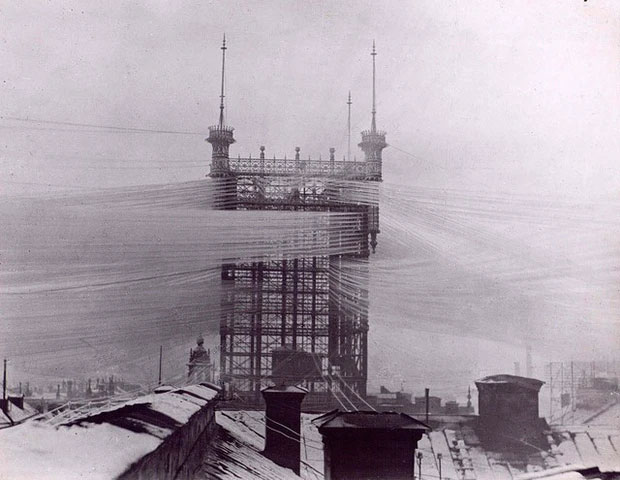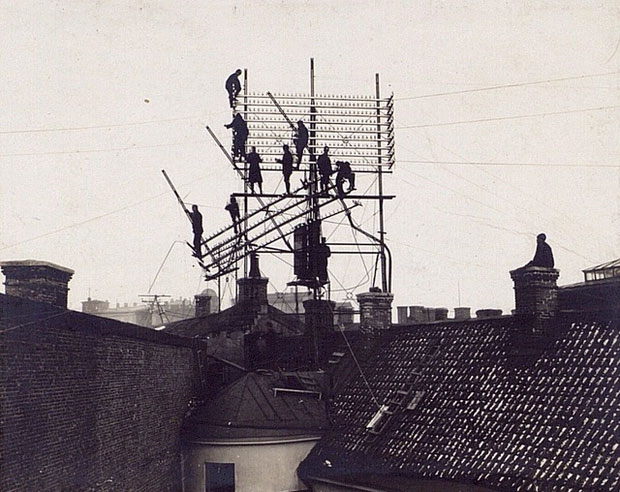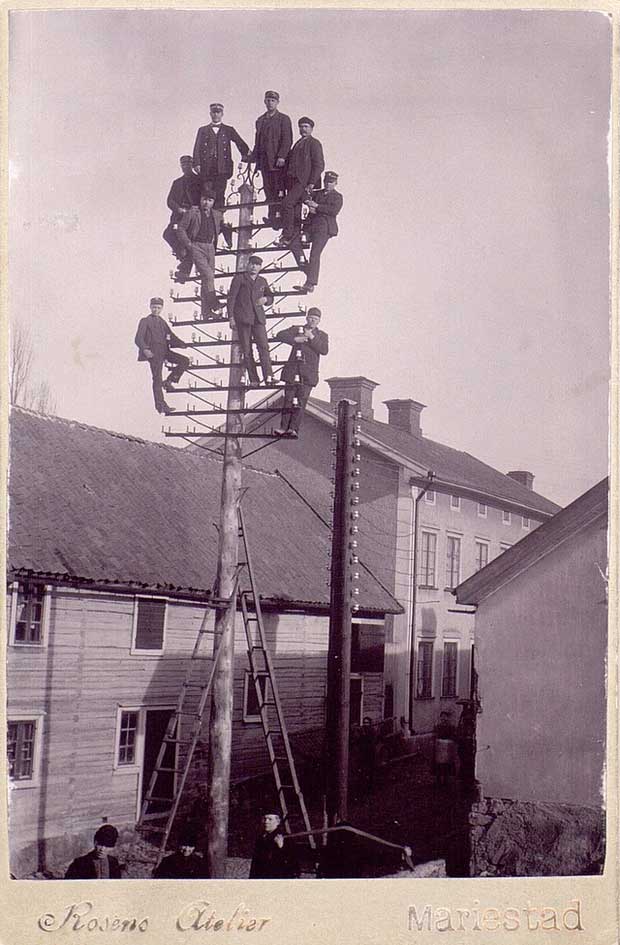Stockholm telephone tower: 'Heaven la earth hammock' in the heart of Stockholm, Sweden
Stockholm telephone tower: A metal structure designed to connect approximately 5,500 telephone lines in the Swedish capital. Built in the 19th century in Stockholm, the tower was damaged by a fire in 1952 and destroyed the following year.

At the end of the 19th century, shortly after man patented the first telephone, the race to connect people and telephone grids followed. However, due to technical and design limitations, all human telephones at the time required separate physical lines. These wires are interconnected through homes or businesses with a telephone exchange, where calls are manually connected. As a result, people had to build odd-looking towers for the purpose of connecting telephone wires, but this tower could carry hundreds to thousands of phone lines depending on its size.

Telephone service at that time was very expensive and only the rich could afford it. In Sweden, the first public telephone exchange was opened by the Bell Telephone Company. It originally had only 121 subscribers. The telephone company charges a subscription fee between 160 and 280 Swedish Krona, depending on the subscriber's location and distance to the exchange. This equates to paying an annual subscription fee of between 9,000 and 16,000 Krona ($1,100 to $1,966) in today's value, which is a very high rate. Bell Telephone with high fees quickly found the competition. It was the Stockholm General Telephone (SAT) company, founded in 1883 by engineer and businessman Henrik Tore Cedergren. He aimed to have a telephone in every household. Cedergren charges very low monthly fees and connection fees, which causes the number of customers to grow rapidly.

By 1886, there were more telephone numbers in Stockholm than in any other major city in the world. There are 4,832 telephone users, of which about 1,600 are Bell Telephone customers. In 1887, SAT became the largest telephone company in the world and acquired Bell Telephone in 1888. During this period, every customer's substations and telephones were connected to the main station by overhead cables.

And following the trend of the world, the Telefontornet ('telephone tower') once dominated the Stockholm skyline, and if it were to survive today, it would certainly be one of the landmarks Swedish icon. This tower was built to connect about 5,500 telephone lines in Stockholm in the late 1800s, when Sweden had one of the most complex telephone networks in the world.

Construction was first completed in 1887, but the tower was later enlarged, with the addition of decorative top corner towers and flagpoles. This is an attempt to appease the residents of the city who constantly complain that the structure is too ugly.

Once completed, the telephone tower became a giant construction of the city. Its central location in Malmskillnadsgatan made it the "paradigm" that dominated other structures in the city in a time before tall buildings and skyscrapers. Karl-Väinö Tahvanainen, 90, who used to work on the tower told Svenska Dagbladet (SvD) newspaper in 2012: "Some people in Stockholmers say it's so tall it blocks the sun."

Previously, engineers had not thought of placing telephone cables underground, so telephone wires would be hung densely above the heads of pedestrians, connecting to massive towers like Telefontornet.

This is the place to connect more than 5,500 telephone cables with a total length of about 5,000km. String beams seem messy and easily damaged by external factors.

Over time and human technological development, the late 19th century to early 20th century, the tower gradually became obsolete. Engineers realized that laying underground cables would look much neater than strung up towers. In 1913, the underground telephone cable system was completed, and while Telefontornet was no longer in service, it still stood as a prominent landmark for several decades. At times, the phone company even hung billboards on the tower or rented it to use for many different purposes.

Telefontornet was last leased in 1939 to advertise the Nordiska Kompaniet, at which time a clock with the largest diameter in Europe at the time was placed at the top of the tower, with the intention of It means helping everyone in Stockholmers stay on time, seeing the time without the need for a watch.

Just over ten years later, disaster struck. In 1952, a fire broke out in the Televerket radio laboratory located below the tower, then spread and severely weakened the tower. Considered a potential danger and capable of collapsing at any moment, the tower was later demolished in 1953, putting an end to one of Stockholm's most unique buildings.

However, part of the tower structure was preserved and it is still in operation today. The clock placed on top of the tower still stands today, atop the NK department store, and has become a historical icon even if many people are unaware of its origins.
- The ancient tower in the heart of the city hung over 5,500 telephone wires
- What does heaven look like?
- Make electricity from falling rain drops
- The inheritance of heart disease
- Sweden solemnly organized the 2015 Nobel Prize Ceremony in Stockholm
- Sweden's main airport is paralyzed by a snowstorm
- Why lying hammock is easy to sleep?
- View from soaring glass bottom observatories
- The 2011 Nobel season kicks off
- Vietnamese-based scientist turns rat heart into human heart
- The bank robbery started the syndrome of believing the kidnappers
- Christmas nights are prone to heart attacks
 Biography of hero Vu A Dinh
Biography of hero Vu A Dinh History of hematology
History of hematology Who is Mr. Tam Da 'Phuc-Loc-Tho' and what does it mean?
Who is Mr. Tam Da 'Phuc-Loc-Tho' and what does it mean? Unbelievable facts about the history of the oil and gas industry: Gasoline used to be cheaper than water, so abundant that it had to be dumped into the river...
Unbelievable facts about the history of the oil and gas industry: Gasoline used to be cheaper than water, so abundant that it had to be dumped into the river...